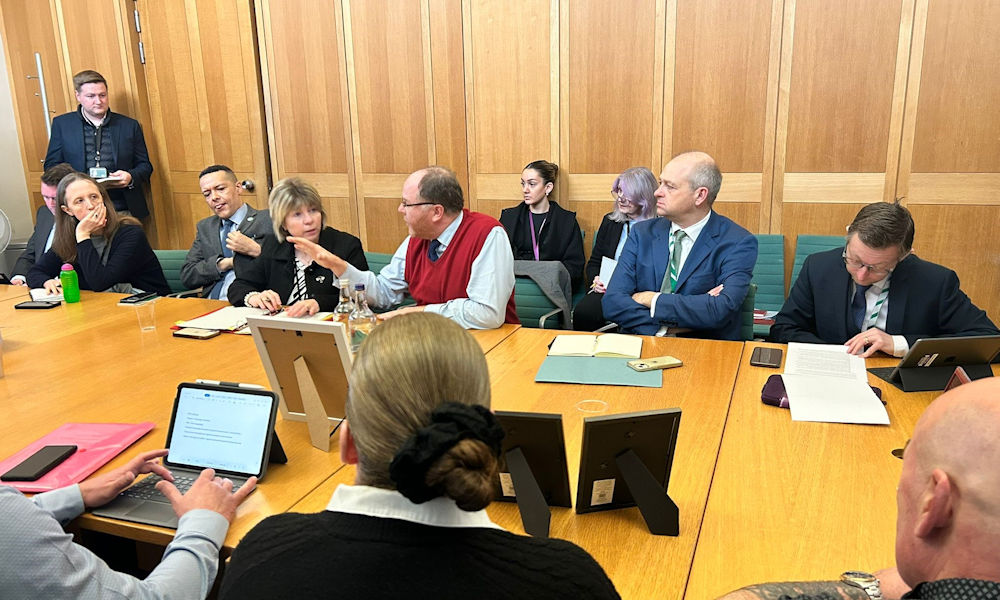
Some of our most vulnerable fellow citizens in desperate need of serious medical help with Mental Health problems have been seriously let down over the last decade by the Norfolk and Suffolk Mental Health Trist (NSFT).
We urgently need:
- Clarity of exactly what went wrong, how many people died as a result, and what the lessons are
- Fast implementation of the new structure of integrated community based services in local hubs
- Much better engagement with patients and their families and carers
- Much better local accountability
- A long term local leadership committee to deliver this
We need to stop the defensive NHS buck-passing, bureaucracy and denial and make sure the system is focussed on delivering the scale of change we need.
Neither can we allow this to become a party political football. Patients need serious action. Now.
That’s why I’ve teamed up with Clive Lewis MP (Labour) for Norwich South to work with the NSFT campaign group and MPs across the two counties to get the right action.
Thank you to BBC Radio Norfolk for covering it so well. See the interview I did with Chris Goreham below.
For more on my Mental Health campaign work, please visit my campaign page here
12 March 2024
The serious ongoing problems with avoidable deaths from undiagnosed and untreated mental illness in Norfolk and Suffolk NHS Foundation Trust has to stop – with the right lessons learned.
Pleased to host today’s key meeting in Parliament with members of the Campaign to Save Mental Health Services in Norfolk and Suffolk group, Clive Lewis MP and Minister Maria Caulfield.
To see my recent question to the minister in the House, please click here
To find out more about my work ‘Speaking Up for Mental Health Services’, please visit my campaign page here
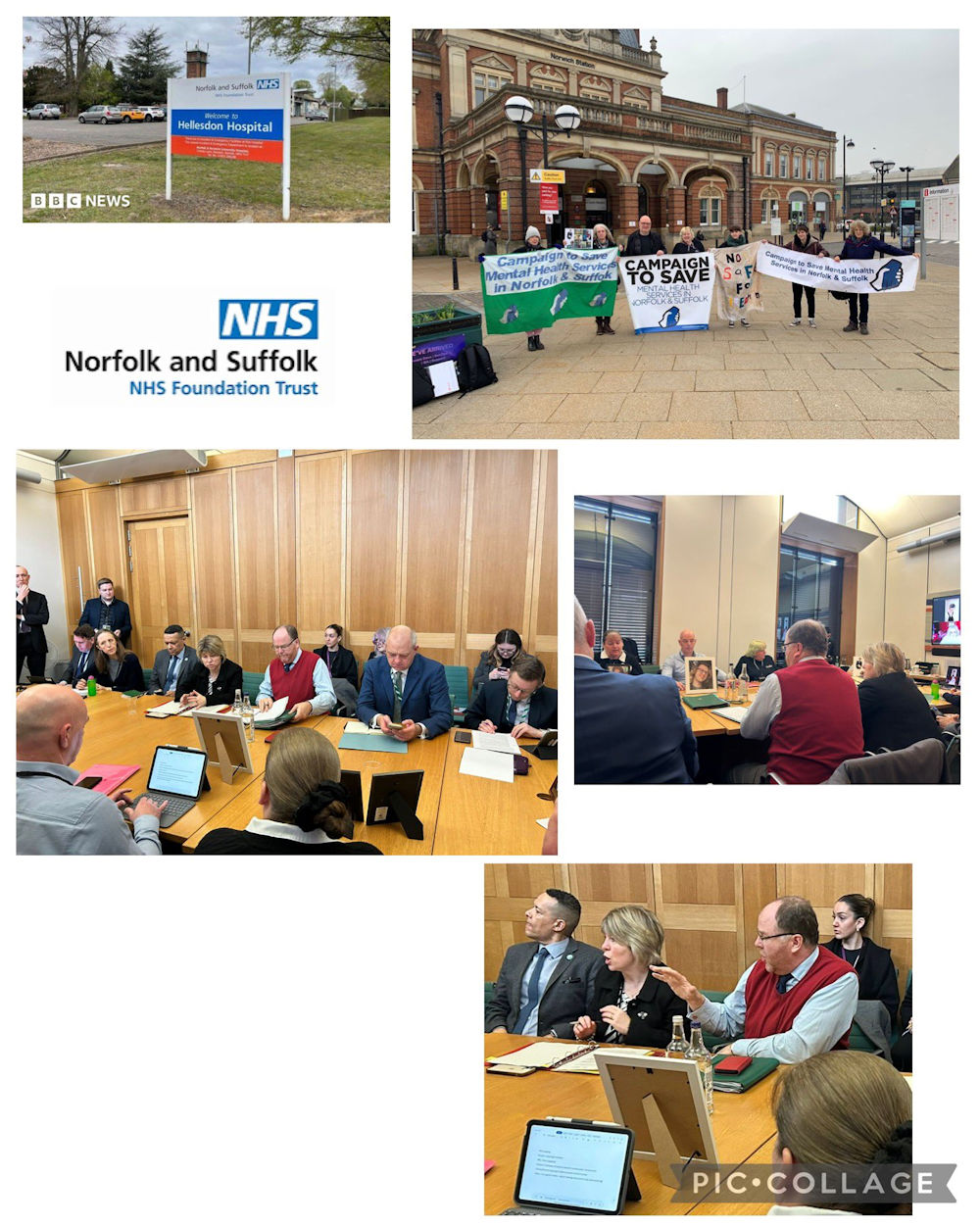
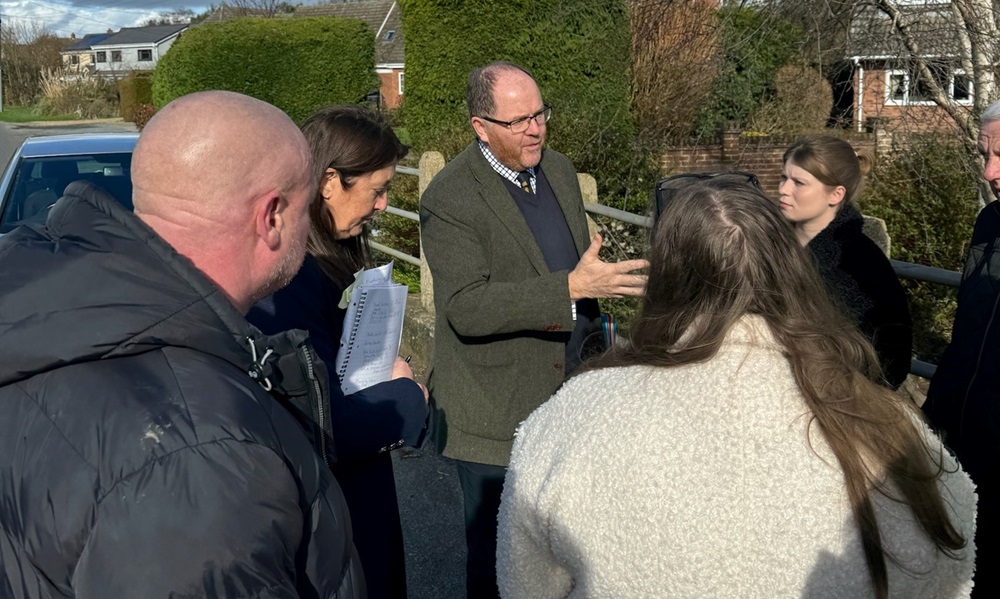
We must do all we can to prevent a reoccurrence of the terrible flooding that affected over 100 properties around Mill Lane as a result of Storm Babet in October.
That’s why, as part of my ongoing flooding campaign work, I was involved in the latest stakeholder meeting this week – reviewing the group’s progress over the last few weeks as it drives forward work to install a new trash screen at the Mill Lane culvert, clear the Mill Lane and Norwich Road culverts and implement a Flood Mitigation and Water Storage Scheme upstream.
Key updates:
- Work on the design and construction of the new trash screen remains on track, with installation expected this summer – when the water level/flow of the watercourse has sufficiently dropped and it can be properly dewatered for the construction of the trash screen’s concrete base.
- Despite some logistical challenges around culvert clearances, NCC are working with Anglian Water, Breckland Council and the local Internal Drainage Board to ensure contractors can carry out the works as soon as possible – with subsequent monitoring to take place. I have committed to doing all I can to add weight to those efforts.
- Norfolk County Council are working with local landowners and the Norfolk Rivers Trust as they continue to develop plans for the proposed upstream Flood Mitigation and Water Storage Scheme. As we know, we have secured £150,000 from Government for that work (see here) and, while the full scheme could take some time to develop and implement, positive conversations are ongoing with the aim of introducing earlier measures, such as “leaky dams”, as soon as this summer.
I will be catching up with the stakeholder group again in a couple of weeks’ time – and joining a subsequent conversation between stakeholders and local councillors. Rest assured, I will keep on this.
In the meantime, I continue to work on bringing my Flooding Bill to Parliament – and am also working with NCC and the Norfolk Strategic Flooding Alliance as we look to establish the first annual Norfolk Flood Prevention Summit before the summer.
To see full details on my work regarding the Attleborough Flooding, please scroll below.
To find out more about my wider Mid Norfolk Flooding campaign, please click here

UPDATE 26 February 2024
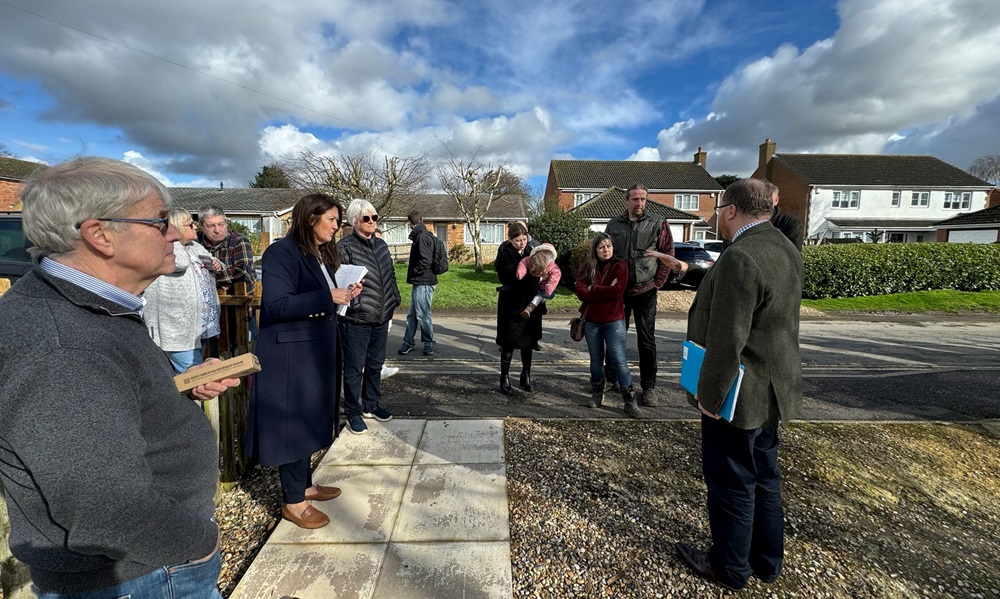
The latest serious flooding in Attleborough is a further reminder of the importance of properly tackling the problems in the town.
That’s why, as part of my ongoing work to hold stakeholders to account and help bring about the solutions my constituents desperately need, I was back in Attleborough on Friday to meet with local councillors, as well as representatives of both Norfolk County Council’s Flood and Water Management team and Anglian Water.
Together, we visited the New North Road residents flooded last week – before heading over to the Mill Lane culvert to receive an update there too.
I was delighted to hear therefore that:
- The Natural Flood Management Fund bid I supported Norfolk County Council with has been successful – securing £150,000 towards work to deliver a proper water storage and flooding mitigation scheme upstream of the Mill Lane culvert.
- Anglian Water have listened to NCC and I and have appointed a Mid Norfolk Flooding Liaison, who was present at Friday’s meeting and who will be working closely with our communities moving forward.
Two very positive steps.
However, there is much more to do. No one should have to live in fear each time it rains. Stakeholders have got to properly grip these problems and address them.
That’s why I remain committed to driving forward my Flooding campaign – particularly through the Flooding Bill I am bringing to the House and through the establishment of a Norfolk Flooding Summit.
Full details of my ‘Flooding and the Mid Norfolk Flood Partnership’ campaign can be found here
To see the EDP article on my visit, please click here
For more information on my work on the Attleborough Flooding specifically, please scroll below.

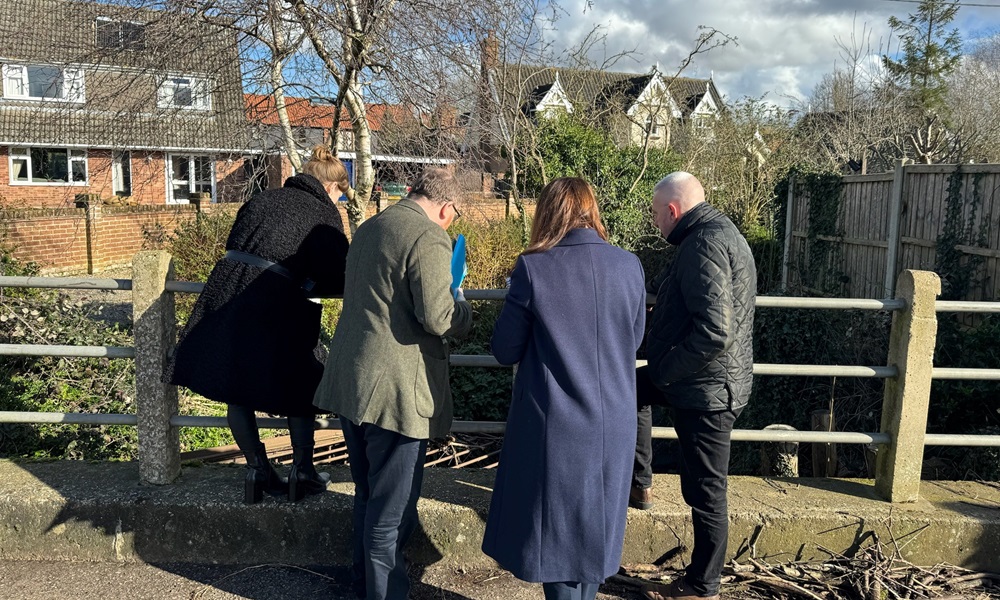
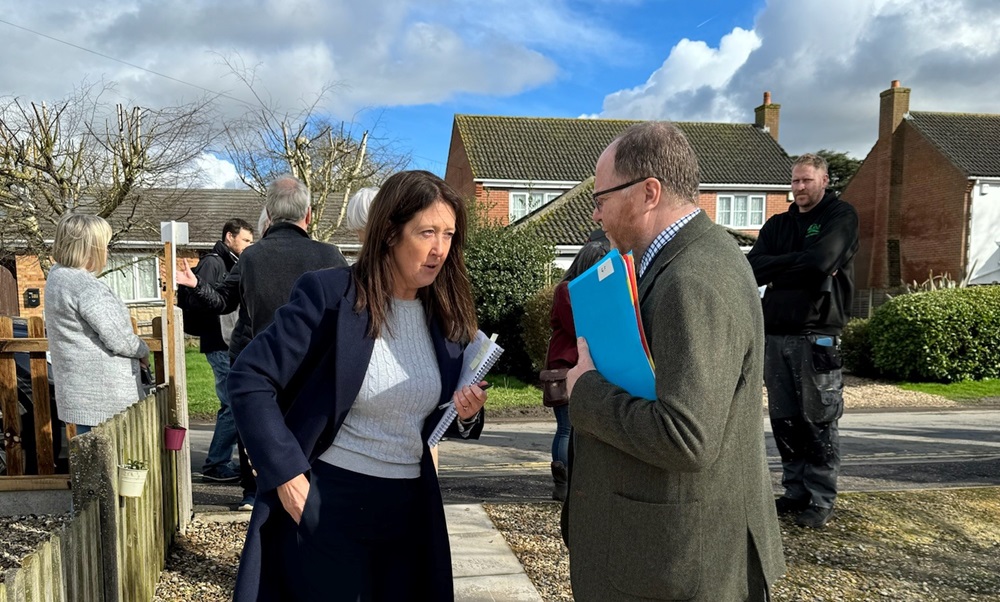
UPDATE 22 February 2024
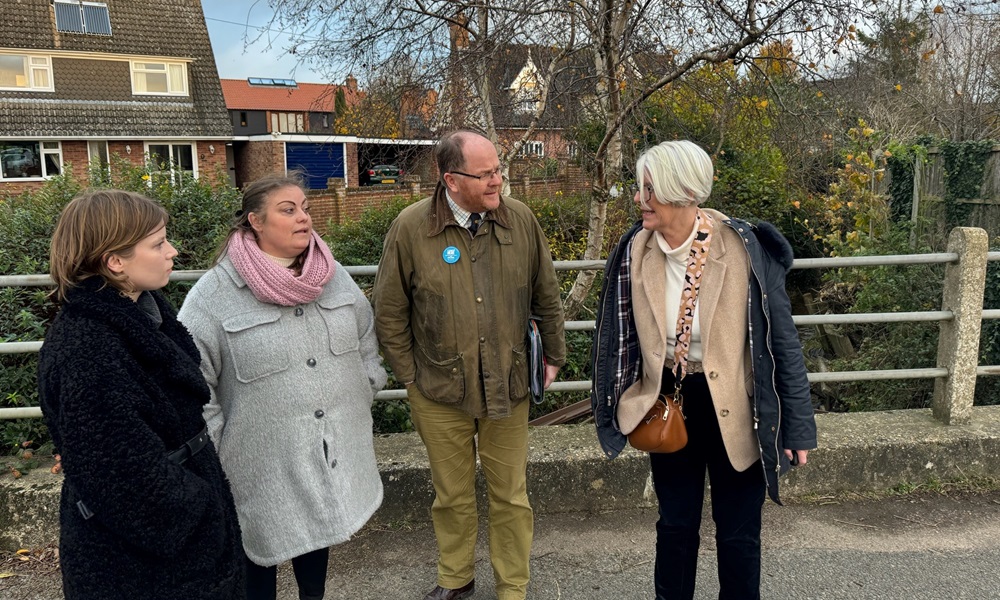
More terrible flooding in Attleborough. More appalling trauma for all those households affected.
Thank you for the Norfolk Fire and Rescue Service and Breckland Council for their rapid response.
Am in urgent contact this morning with Breckland and the key local agencies to get a proper plan in place for the next few days with more heavy rain forecast.
Rearranging tomorrow’s constituency plans to get to Attleborough to see the scale of these floods for myself and thank local volunteers.
This has to stop. That’s why I’m pushing on with:
- Mid Norfolk Flood Partnership
- My Flooding Bill to change the planning and liability laws
- The Norfolk Flood Summit I’m convening to get all the c.36 agencies responsible together to stop the buck passing and sort it.
More on my work to tackle the Mill Lane culvert and watercourse flooding issues here.
More on my wider flooding campaign work here.

UPDATE 21 February 2024
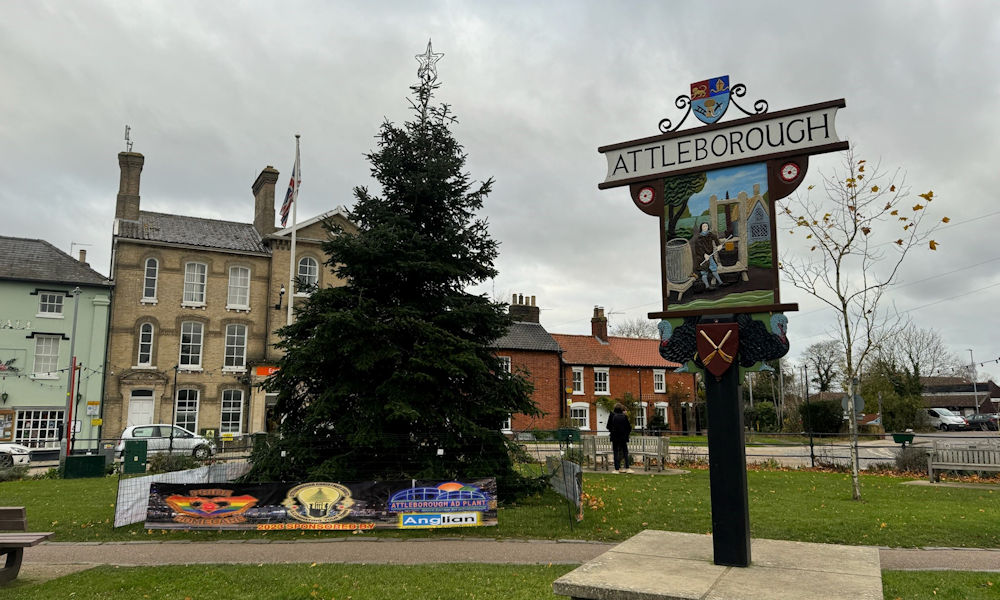
With Storm Babet still fresh in the memories of the 100+ Attleborough households and businesses flooded back in October, I am very aware of the ongoing pressure and stress heavy rainfall is putting upon many of my constituents in the town.
That’s why, since the multi-agency meeting I convened last month to strengthen coordination between stakeholders at all levels, I have continued to take a close interest with local councillors.
I recently joined a stakeholder conversation to discuss the Mill Lane culvert and receive an update on progress, and can confirm that:
- The design for the new Mill Lane culvert trash screen has now been approved and costed – with Norfolk County Council, Breckland Council and Anglian Water all reaffirming their commitment to share those costs and proceed as quickly as possible.
(As highlighted previously however, the new trash screen may not be in place for several months – with the screen itself taking up to a month to construct and then stakeholders having to wait until the water level has dropped sufficiently and the watercourse can be dewatered for the construction of the screen’s concrete base).
- NCC have had the culverts at Mill Lane and Briar Gardens inspected again. Deposits of gravel and silt have been found in parts and NCC are pressing ahead with arrangements to have these cleared – with the necessary contractors set to carry out works in early March.
In addition to this, I can share news that:
- I continue to support NCC’s Flood and Water Management team and local councillors as they engage with landowners upstream to explore potential flood prevention and mitigation measures on their land.
- NCC sent riparian ownership reminder letters to landowners and homeowners along the problem watercourse in mid-January to remind them of their riparian responsibilities and make clear what they must not throw into the stream.
- NCC are working with the Internal Drainage Board to lobby Network Rail to inspect and, if necessary, clear the culvert they are responsible for downstream under the A11.
- Stakeholders continue to look at what more can be done to protect the most at risk properties this winter.
Once again, I’ve reiterated the importance of looking at the longer term issue of responsibility and maintenance of the culverts and watercourses – and I will be involved in the next Mill Lane culvert stakeholder meeting next week as these vital conversations continue.
I am also arranging the next wider multi-agency meeting on the Attleborough flooding too.
Rest assured, I will continue to work with local councillors and residents to hold the key stakeholders to account on this to drive forward the solutions Attleborough needs to see.
To learn more on the Attleborough Flooding campaign to date, please scroll down and read the updates below.
To learn more about my wider ‘Flooding and the Mid Norfolk Flood Partnership’ campaign, please click the link here.
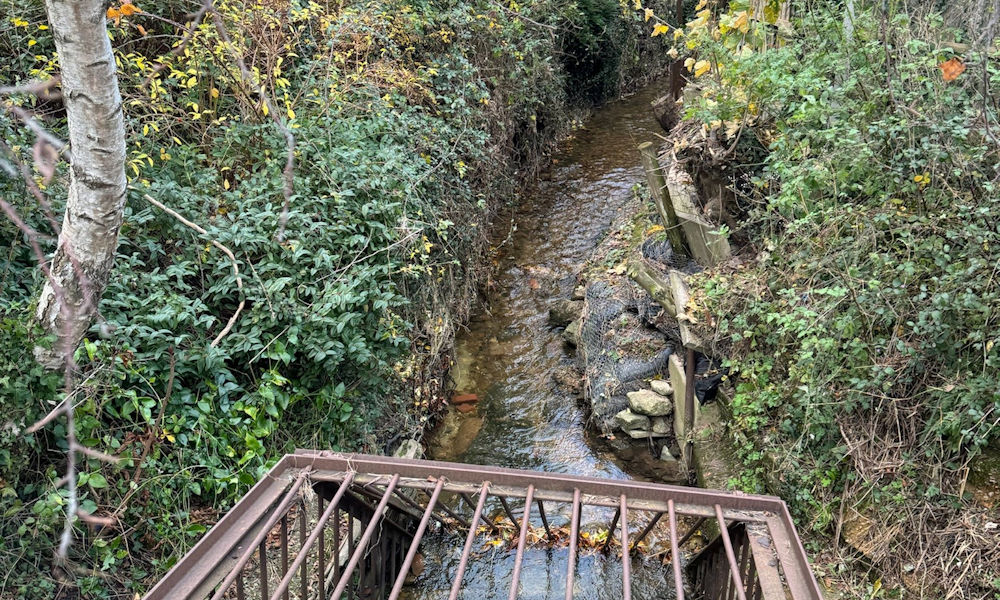
UPDATE 17 January 2024
Storm Babet flooded over 100 homes in Attleborough back in October and local residents (for some of which the recent flooding was the fourth time they had been affected) are rightly furious.
That’s why, as part of my ongoing Mid Norfolk Flood Partnership and Flooding Campaign work, I continue to take an active role in supporting those affected and holding the key stakeholders to account – both here in Mid Norfolk, but also in Westminster.
While a number of short and medium term measures have already been carried out or are underway (see here), the incredibly high water levels at the Mill Lane culvert and watercourse at the start of the new year, and the serious risk residents are having to take in order to protect their homes, shows more must be done.

Last week, I convened a multi-agency meeting with representatives from Norfolk County Council, the Norfolk Strategic Flooding Alliance, Breckland Council, the local Internal Drainage Board, Anglian Water, Natural England, the Environment Agency – as well as local Town, Parish, District and County Councillors and representatives of local landowners upstream of the Mill Lane culvert and watercourse – to emphasise again the importance of tackling these serious issues and explore in greater depth the short, medium and long term work required to significantly reduce future flood risk.
I drew particular attention to those homeowners most at risk of flooding on Mill Lane – many of whom feel helpless and desperate, believing they have no choice but to seriously risk their own safety to try and keep the trash screen across the Mill Lane culvert clear each time it rains.
The key discussion points from the meeting were:
- A shared acknowledgement that residents are seriously risking their own safety to keep the Mill Lane culvert trash screen clear of debris – and of the fact that conditions and circumstances at the culvert can change rapidly during periods of heavy rain.
- Agreement that the existing Mill Lane culvert trash screen should not be removed until the new replacement has been installed (work currently underway – see here) – as the culvert has a 90 degree bend that, were it to become blocked, would be extremely difficult and costly to clear – and significantly worsen the current flood risk to the area.
- NCC Flood and Water Management officials met with Anglian Water contractors on-site (the day prior the meeting) to verify the new trash screen designs ahead of pricing the work – with a multi-agency agreement already in place to fund it.
- The installation of the new trash screen will likely not be possible prior to the summer. This is because the watercourse will need to be de-watered so that a new concrete base can be constructed and the trash screen fitted.
- Further measures are therefore required in the short term to try and reduce flood risk along the watercourse and at the Mill Lane culvert.
- NCC are going to work with local landowners and other stakeholders to explore installing an additional, temporary screen somewhere upstream that can catch debris and prevent it becoming a problem in Attleborough itself.
- The Mill Lane culvert, and others along the watercourse, cannot be expanded – nor the watercourse itself deepened or widened – due to the amount of development and road access around and across it. The enormous cost and disruption, and lack of space, make it impossible.
- Given concerns over residents and local councillors risking their safety by entering the watercourse to keep the Mill Lane culvert trash screen clear, a suggestion was made to appoint a jointly funded contractor to be on 24/7 call out to clear debris and blockages at the culvert trash screen when required. This suggestion was dismissed on the basis that no organisation would allow their staff to entering the water in storm flow conditions (when they would be most needed) – especially if Norfolk Fire and Rescue themselves have said the risk would be too great for even their own teams.
- A suggestion was made to explore how the watercourse may, long term, be diverted to another course away from the town. Flooding Officers explained this would probably not be possible given local topography.
- It is therefore not possible to immediately remove all flood risk. Instead, agencies must work with the properties most at risk to do as much as possible to improve their flood resilience.
- NCC have also submitted a bid to the Natural Flood Management Fund, supported by myself and others, and I am working with them and local landowners upstream to explore how we might deliver a Flood Mitigation and Water Storage Scheme that could drastically reduce the long term flood risk to homeowners and businesses in Attleborough (see more here)
- Everyone affected in the area by flooding in October must formally report their cases via the Norfolk County Council website to enable the Flood Investigations underway to be as accurate as possible – which in turn will strengthen the hand of local stakeholders to lobby for additional funding and support.
- NCC are to look at monitoring water volumes and storm flows on the watercourse – again to strengthen their hand when lobbying for resources.
- Local councillors asked what more could be done to improve safety for those homeowners currently taking risks to keep the Mill Lane culvert trash screen clear. It was asked if lighting and cameras could be installed.
- I reiterated my ongoing support for all the efforts to tackle these flooding issues – and highlighted my efforts in Westminster to bring about the national reform needed also (see more here)
As is clear, this isn’t an easy fix – with multiple challenges faced. However, I am determined to all I can to support the community.
The key focusses/timescales moving forward are:
Short Term (Now-next few weeks)
- Doing as much as possible to improve the flood resilience of the most at risk properties
- Explore what more can be done to improve safety for those putting themselves at risk to keep the Mill Lane culvert trash screen clear
- Find a suitable location for an additional, temporary screen upstream to collect debris – and explore additional short term measures upstream that can reduce flood risk
Medium Term (Summer)
- Replacement of the existing trash screen with a new one that is designed specifically for the challenges being faced.
- Continue to explore what measures can be introduced to reduce flood risk.
Longer Term
- Deliver a Flood Mitigation and Water Storage Scheme upstream that can significantly reduce flood risk
- Deliver legislative changes and reform in the House to better empower local communities so that they can protect themselves from flooding, while also holding developers to account when new housing exacerbates local problems.
Rest assured, I will keep working tirelessly on this issue.
To stay up to date, please visit my flooding campaign page here.
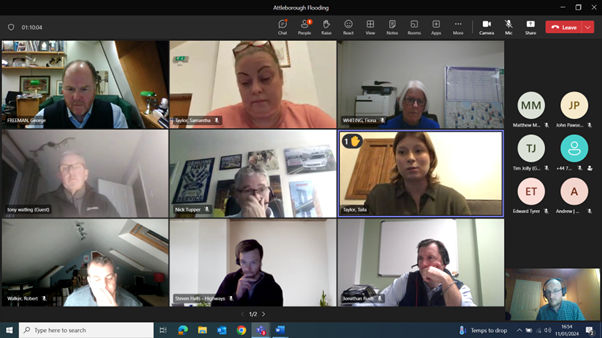
UPDATE 4 December 2023
Over 100 homes in Attleborough were flooded in Storm Babet at the end of October.
We cannot allow this to happen again. Local residents (for some of which the recent flooding was the fourth time they had been impacted) are rightly furious.
That’s why earlier today, as part of my ongoing campaign (and having recently reconvened the Mid Norfolk Flood Partnership that I established back in early 2021 – see here), I met with Norfolk County Council’s Flood and Water Management team, the Norfolk Strategic Flooding Alliance and representatives for some of the landowners upstream of the Mill Lane culvert and watercourse.
It’s clear that that we need a proper long term strategic plan that addresses problem watercourse pinch points AND looks to better control the flow of water downstream during heavy rainfall events. While some positive progress is already being made at the Mill Lane culvert itself (as explained in my previous Attleborough Flooding campaign update here), today’s call focused on what can be done further upstream – and I am committed to actively supporting NCC/the NSFA and partners as they work with landowners and other agencies to explore what flood mitigation and water storage scheme measures might work best for Attleborough.
To see all of my recent work supporting Attleborough residents, please click here or see below.
For full details on all of my flooding campaign work, please visit my website here.
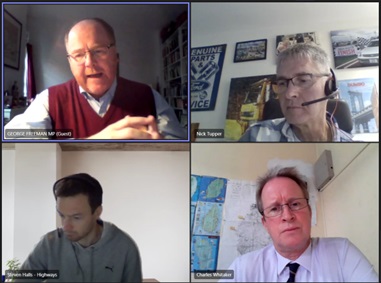
UDPATE 29 November 2023
Attleborough was one of several Mid Norfolk communities badly impacted by recent flooding.
That’s why, as part of my ongoing campaign, I visited Mill Lane with Cllrs Samantha and Taila Taylor this past Friday to see the problem culvert/watercourse first hand and meet with some of the worst affected residents.
Please see my video above.
Local residents (for some of which the recent flooding was the fourth time they had been impacted) are rightly furious – and I continue to hold the key stakeholders to account to ensure everything that can be done is indeed being done to provide affected residents with the support they need, as well as to put in place a short, medium and long term plan that looks to try and prevent future such flooding again in future.
Some positive progress is already being made (as explained in my previous Attleborough Flooding campaign update here), but there still remains much more to do.
That’s why, as highlighted in my recent update here, I recently reconvened the Mid Norfolk Flood Partnership to give our communities the strongest possible voice on these issues. Attleborough had strong representation on that call and I am determined to do everything I can, alongside local councillors, to ensure residents like those on Mill Lane and surrounding streets are heard.
I will be involved in more meetings in the coming days and am also writing to ministers and officials in Westminster to re-emphasise again the need to put greater emphasis on flooding and drainage matters in the planning process – including putting increased responsibility on developers who’s developments subsequently flood and/or impact the existing community.
To stay up to date with all my work on these issues, please visit my Flooding campaign page here.
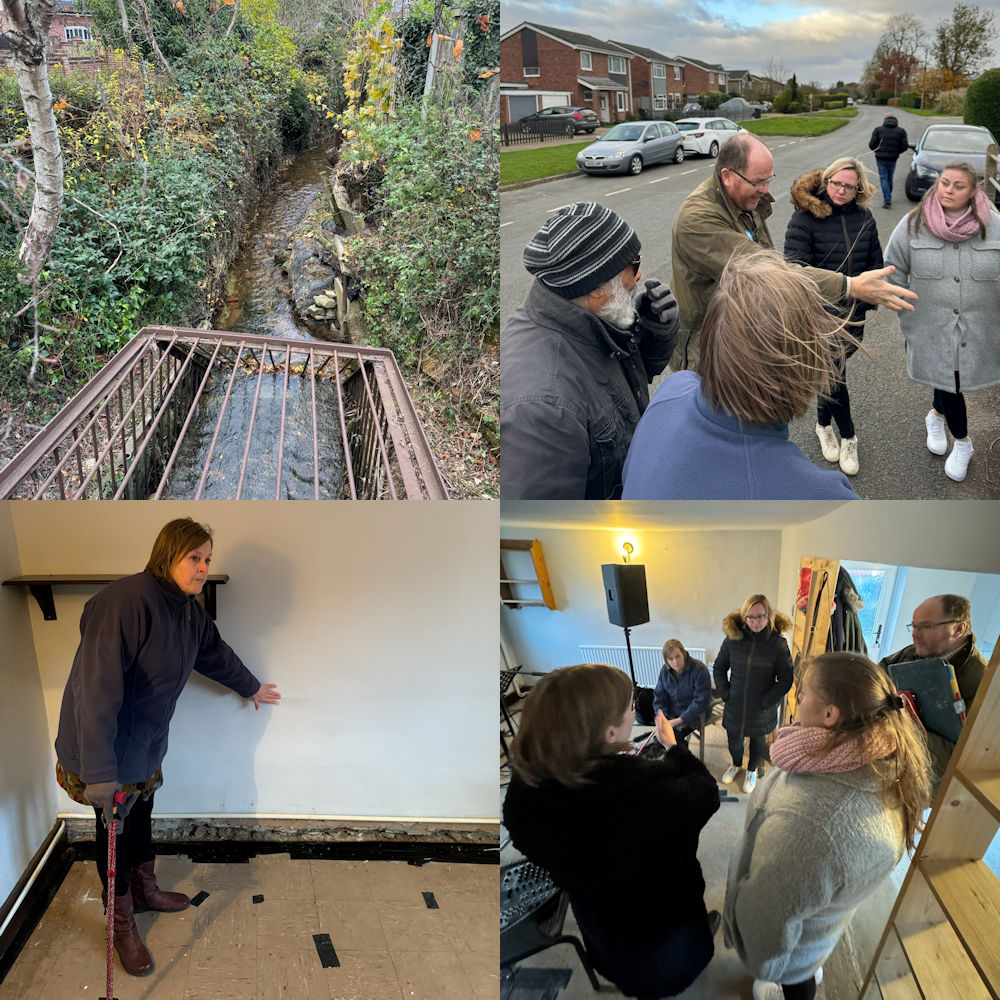
UPDATE 3 November 2023
Further to my webstory update last week (see here), I can now provide more information on the work being done by multiple parties to address the terrible flooding that has recently affected many households and businesses in Attleborough.
On Monday, the Town Council and local district and county councillors held a public meeting in the town for local residents to speak with key stakeholders. The event was well attended and I am pleased to report that stakeholders have been following up on a number of the points and concerns raised – with additional site visits undertaken to the culvert and watercourse on Mill Lane (as well as the culvert in Briar Gardens). Meetings with developers to assess drainage on their building sites have also taken place and I am aware that a series of additional measures, along with further clearing of drains and ditches, are already being implemented – with anecdotal reports of additional blockages being addressed. I will continue to monitor progress closely.
Further to the emergency meeting I held last week (see here), an urgent meeting took place on Tuesday between Norfolk County Council, the Norfolk Strategic Flooding Alliance, Breckland Council and Anglian Water to discuss in greater depth the specific issues that caused flooding at the Mill Lane culvert and connected watercourse.
As many are aware, the culvert and watercourse were divested to riparian ownership many years ago. While that question of who will take on the long term ownership remains (and rest assured that I continue to push very hard on that and have challenged all stakeholders to work collaboratively to develop a proper strategic plan and solution for the issue), I welcome the collective recognition that something needs to be done as soon as possible, with agreement that the inadequate and unsafe trash screen that caused many of the recent problemsneeds to be replaced.
On a without prejudice basis (of who will assume long term responsibility for the culvert and watercourse) and as a gesture of goodwill, Anglian Water have agreed to have their contractors assess the trash screen and culvert and work up the design for a much safer, more effective replacement. All stakeholders will then jointly fund the improved screen and Anglian Water will install it.
In the meantime (and again on a without prejudice basis and as a gesture of goodwill), Anglian Water will endeavour to send staff every couple of weeks to keep the existing trash screen clear. (Breckland, NCC and Anglian Water are also discussing a longer term plan for removing any debris collected from the culvert and watercourse)
I would like to reiterate however that I will keep on the critical question of who will assume the long term responsibility and ownership of the culvert and watercourse – and am already liaising with the key stakeholders on the date for a follow-up meeting to discuss that matter further.
NCC have also confirmed that the gulleys around Mill Lane have been cleared (with additional review taking place of gulleys on surrounding streets) and I understand that an assessment is taking place as to whether the trash screen at the Briar Gardens culvert should be removed.
A full flood investigation is now being led by NCC in line with their statutory processes. Although their Flood and Water Management team had already been working on proposals to better mitigate flooding in this area (as a result of the December 23rd-24th 2020 flooding event), there is recognition that their Flood Plan for the area, and its associated work, now needs accelerating and upscaling. I have committed to supporting NCC as they seek to secure the additional funding required to implement any recommended measures, as well as to engage with key local landowners.
I am also in the process of reconvening the Mid Norfolk Flood Partnership I previously established – and will ensure Attleborough is represented in those vital conversations.
Rest assured, I am determined to do everything I can to speak up for those affected in Attleborough, as well as those across Mid Norfolk.

UPDATE 25 October 2023
Storm Babet has reminded us again why we must continue to take flooding seriously.
Attleborough was one of several Mid Norfolk communities badly impacted, with severe flooding on Mill Lane, Norwich Road, Ferguson Way and other nearby streets. For some, it was the fourth time they had been flooded in 30 years – and the second time in just under three years. I appreciate, and share, the immense anger and frustration felt by those that have been forced to leave their homes as a result of the damage suffered this past weekend.
That’s why I held an emergency meeting today with Norfolk County Council and their Norfolk Strategic Flooding Alliance, Anglian Water and Breckland District Council to get to the bottom of what is causing the flooding at the watercourse and culvert on Mill Lane, as well as ensure that those with statutory flooding responsibilities come together and develop an urgent action plan.
While NCC began working on proposals to address flooding at this location in light of the December 2020 flooding, Storm Babet has brought into sharper focus the need to upscale and accelerate those proposals, and address other issues such as questions around which authority is responsible for the culvert and watercourse and therefore who should be maintaining them.
I had made clear that there needs to be:
- A proper plan for ensuring affected residents (and the wider community) are protected from further flooding this winter.
- An acceleration and upscaling of efforts to put in place a long term solution.
- A proper plan for who is going to be responsible for this culvert and watercourse in due course.
- Agreement on who is going to keep the culvert and watercourse clear NOW – while the longer term plan is being developed and implemented.
I am in close contact with local district councillors and a number of those worst affected by the flooding and am determined to help them work with key stakeholders to develop a solution.
We must see action. This must not be allowed to happen again. And residents should not be risking their own safety to try and keep this culvert clear during storms and heavy rainfall.
More widely, I will be reconvening the Mid Norfolk Flood Partnership I established as a result of the Winter 2020/21 flooding to help support those affected by Storm Babet and ensure our communities have the strongest possible voice heading into this autumn/winter.
Rest assured, I will continue to support councillors and residents in the days, weeks and months ahead.
To see my Flooding Update earlier this week, please click here
To find out more about my historic campaign work on flooding, please visit my campaign page here
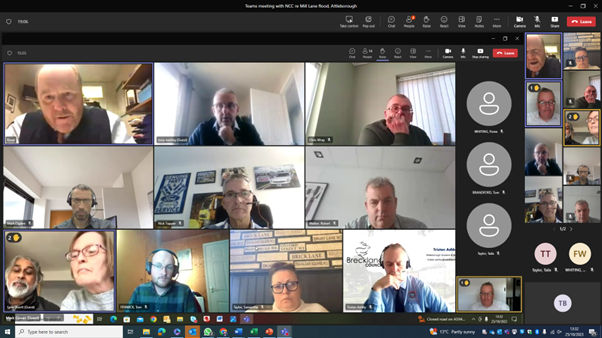
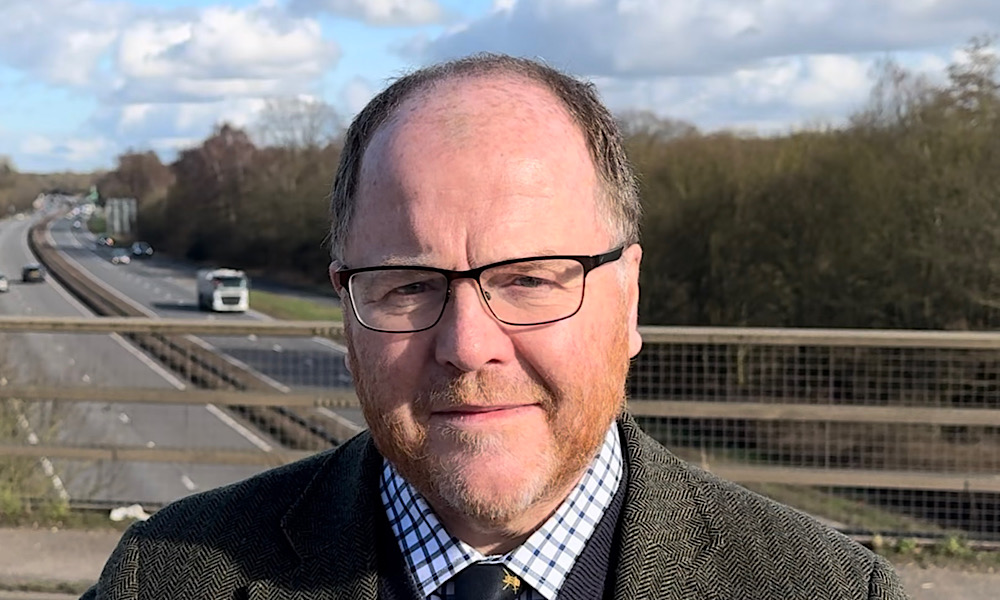
For 30 years, Norfolk has campaigned for A47 dualling.
I, myself, have been on the case for 15 years, working with fellow Norfolk MPs, the A47 Alliance and the EDP – and was delighted to get the then Prime Minister to Mid Norfolk back in 2014 to agree the next phase of A47 improvements.
But we’re still awaiting the North Tuddenham-Easton dualling and Thickthorn Roundabout improvement works – as well as full dualling of the A47 from Lowestoft in the East to the A1 in Cambridgeshire to the West. Only with full dualling of the entire A47 will we be able to unlock Norfolk (and the East)’s full economic potential – and make the most improvement to safety along the route.
That’s why I welcomed the latest A47 Alliance summit update this past Friday and remain a vocal advocate of getting on and delivering these vital works.
Having publicly called for Dr Andrew Boswell to end his constant blocking of the improvement works already committed (see here), I continue to work hard with the Alliance, my fellow Eastern MPs and other key stakeholders to make the case for further, and full, A47 dualling and improvements.
Of course, we cannot go on covering our country in commuter housing estates and continuing to build new roads anywhere. However, the A47 has been a vital, blocked artery across our county for decades – lethal in so many places and stifling Norfolk’s economic potential.
There is nothing “green” about the flooding, pollution, congestion and deadly accidents that the A47 in its current form entails.
We must get on and deliver improvements.
Rest assured, I am committed to doing everything I can on this.
To find out more about my work ‘Making Our Roads Fit for the 21st Century’, please visit my campaign page here
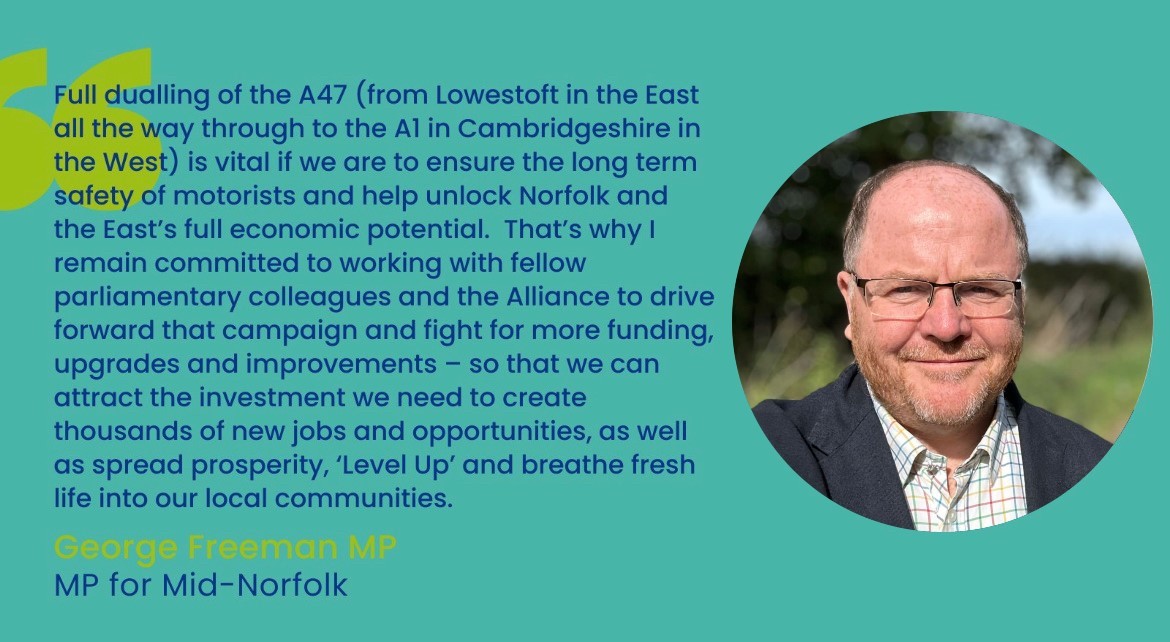
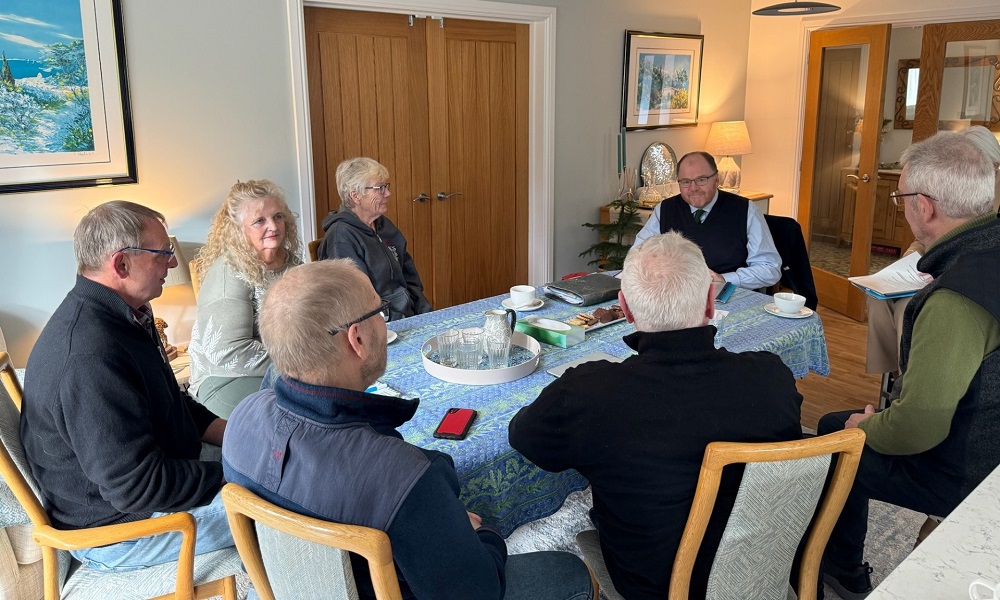
Breckland Council’s Planning Committee last week refused permission to an application that would have transformed the light, community-focussed Coughtrey Industrial Estate into a site focussed on much heavier industry – just meters from residential houses.
This is great news – and shows the power of the local MP, local councillors and the community all working together to make the voice of rural communities heard.
To find out more about the case, as well as my work with the community to raise the very serious concerns of local residents, please scroll below for my previous webstory updates.
UPDATE - 20 February 2024
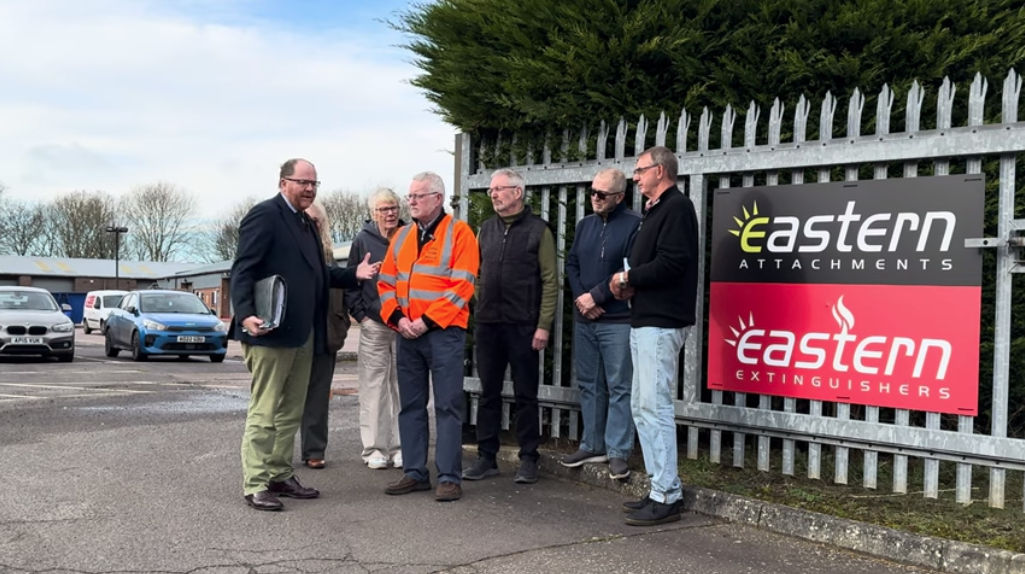
We all want to see vibrant local businesses providing important employment opportunities and boosting our local communities.
However, this must not come at the unreasonable expense of Mid Norfolk’s precious rural quality of life or the sustainability of our country roads and local services.
That’s why I continue to take seriously the very real concerns of local people in Griston (and surrounding villages) regarding proposals to transform a light, community-focused light industrial unit into one much more focussed on heavy industry – just meters from residential houses.
Further to my recent site visit to meet with concerned parish councillors and residents in Griston, as well as my formal submission to Breckland Council (who’s Planning Committee will determine the three applications in question), I have also today written to the Secretary of State to ask what more can be done to protect rural villages like Griston and ensure the National Planning Policy Framework does not encourage inappropriate heavy industry in our rural communities.
See my letter below.
Rest assured, I will continue to work with local councillors and community groups to speak up on behalf of and support my Mid Norfolk towns and villages when faced by wholly inappropriate and/or unsustainable applications.
To find out more on my work on this issue to date, please scroll down below.
To find out more about my wider ‘Planning and Protecting Our Rural Landscape and Heritage’ campaign, please visit my campaign page here.
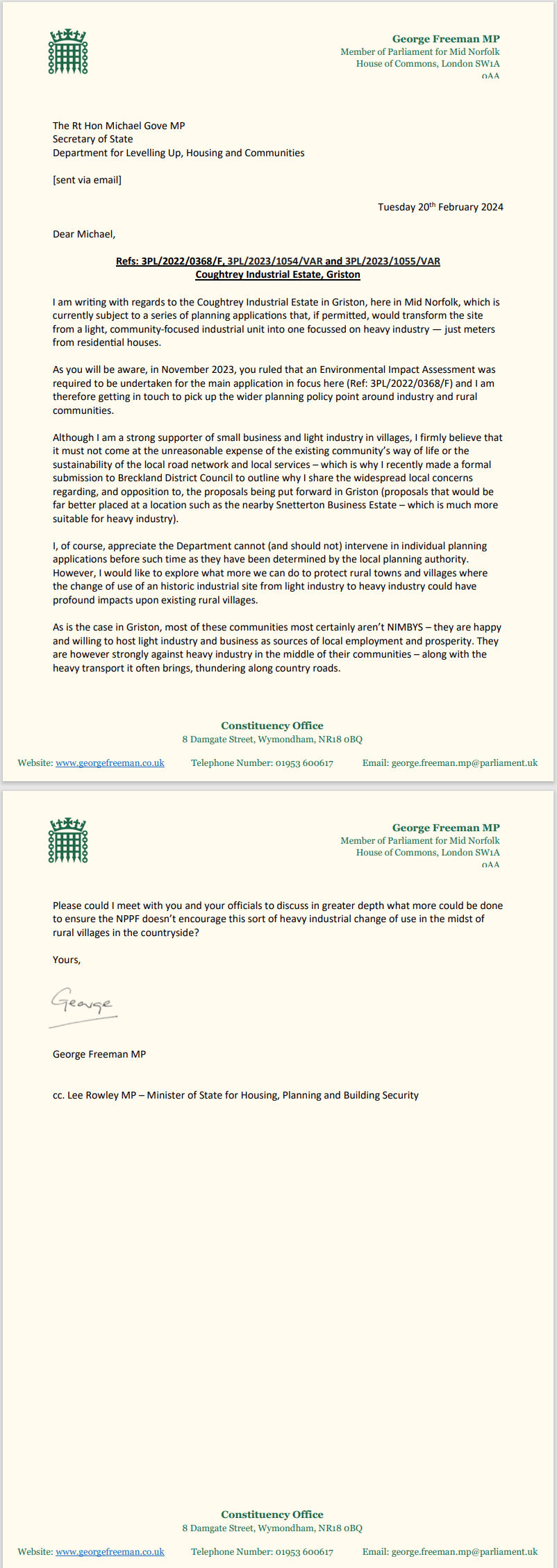
UPDATE - 13 February 2024
We all want to see vibrant local businesses providing important employment opportunities and boosting our local communities.
However, this must not come at the unreasonable expense of Mid Norfolk’s precious rural quality of life or the sustainability of our country roads and local services.
That’s why I met with local residents in Griston recently to discuss in greater depth widespread local concerns at proposals to transform a light, community-focused industrial unit into one focussed on heavy industry — just meters from residential houses.
See my video above.

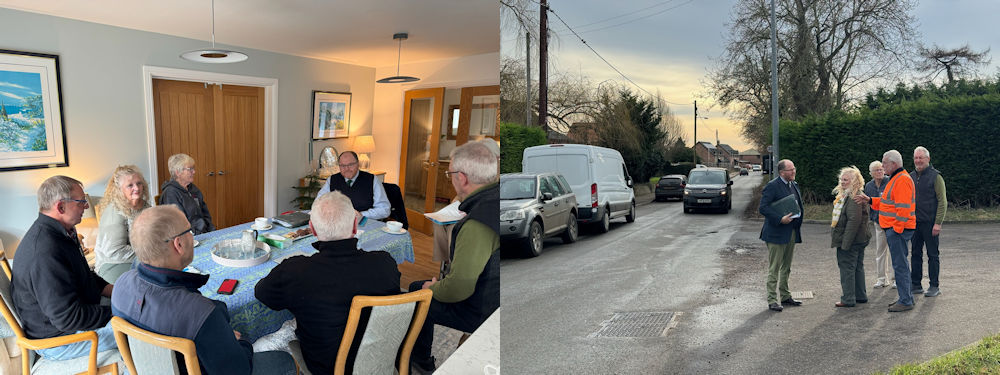
Having already written to the leader of Breckland before Christmas to make my opposition to the proposal clear, I very much understand why the proposals are of such concern to the local community – and will continue to do everything I can to help make their voices heard.
I will also be flagging the case to DLUHC ministers as an example of why we must ensure rural communities have a strong voice when applications for inappropriate heavy industry are brought forward in their area.
The proposals here would make much more sense down at the industrial park at Snetterton, not in the heart of small rural village.
To find out more information on my work supporting Griston villagers on this issue, please click here
My formal submission to the Breckland Planning Process can be seen below.
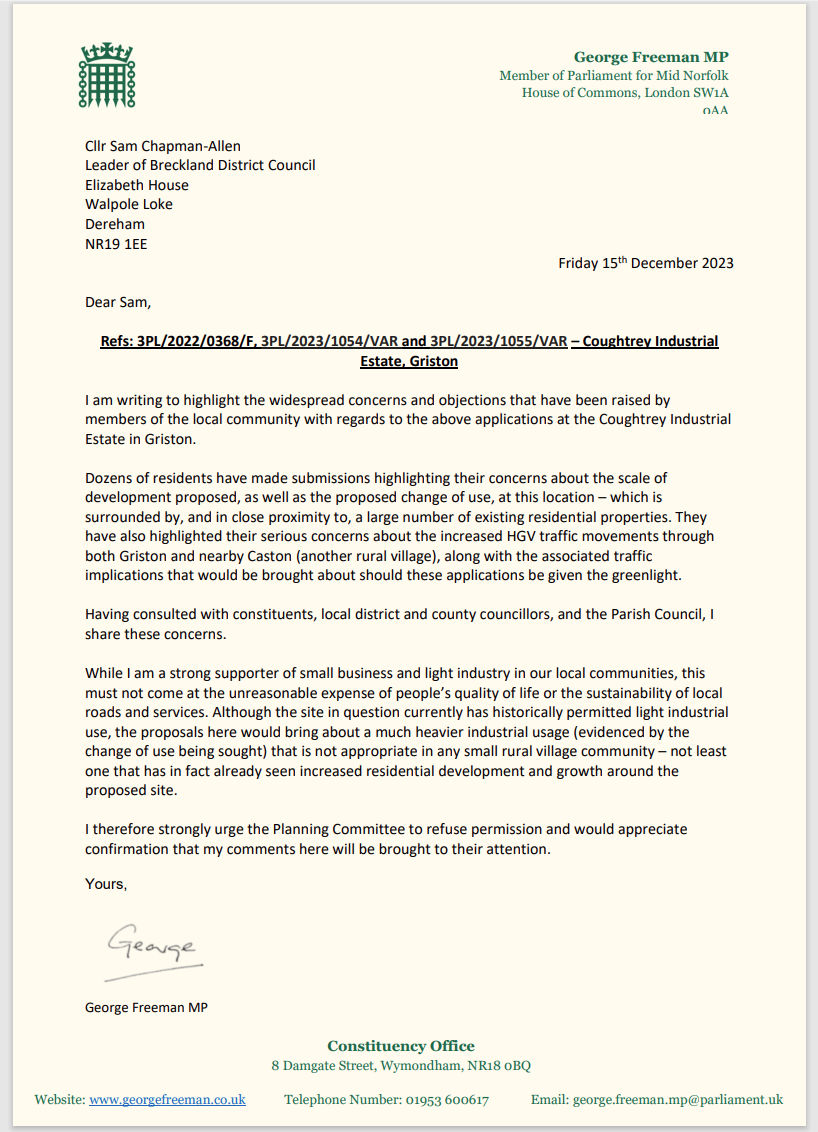
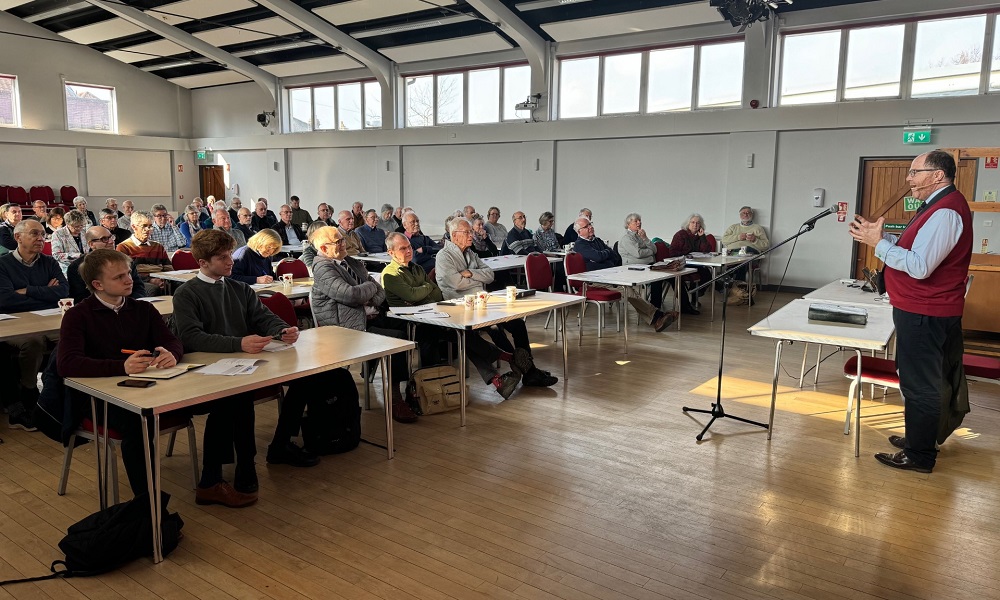
Over recent years, Norfolk and the wider New Anglia region has become a cluster of so many world class hubs of science, innovation and enterprise.
But too few policy makers in Whitehall are aware of the breadth of this expertise and enterprise driving huge economic opportunities in our part of the world.
That’s why my mission when I was first elected a Member of Parliament – having spent fifteen years starting new technology companies in the Eastern region – was to put the Norfolk Innovation Economy firmly on the map.
That remains a key focus of mine to this day and so I welcomed the opportunity to join the Wymondham U3A group on Friday to discuss my vision for our region – and specifically what I call the ‘Norwich Research Triangle’ (Dereham-Norwich-Wymondham/Attleborough).
If we plan properly and capitalise on our area’s unique position on the frontline of many of the most exciting high growth sectors of today and tomorrow, our region could become the centre of a Rural Renaissance that spreads jobs, new opportunities, prosperity and fresh life into our local towns and villages – all while protecting and enhancing the rural heritage, landscapes and way of life that makes Norfolk such a wonderful place in which to live and work, and to visit.
We need to be better at telling the world that there is more to East Anglia than Cambridge. We need to tell them about the vast, exciting opportunities in our area – and attract their inward investment.
To find out more about my work on the Norfolk Innovation Economy, please visit my website here
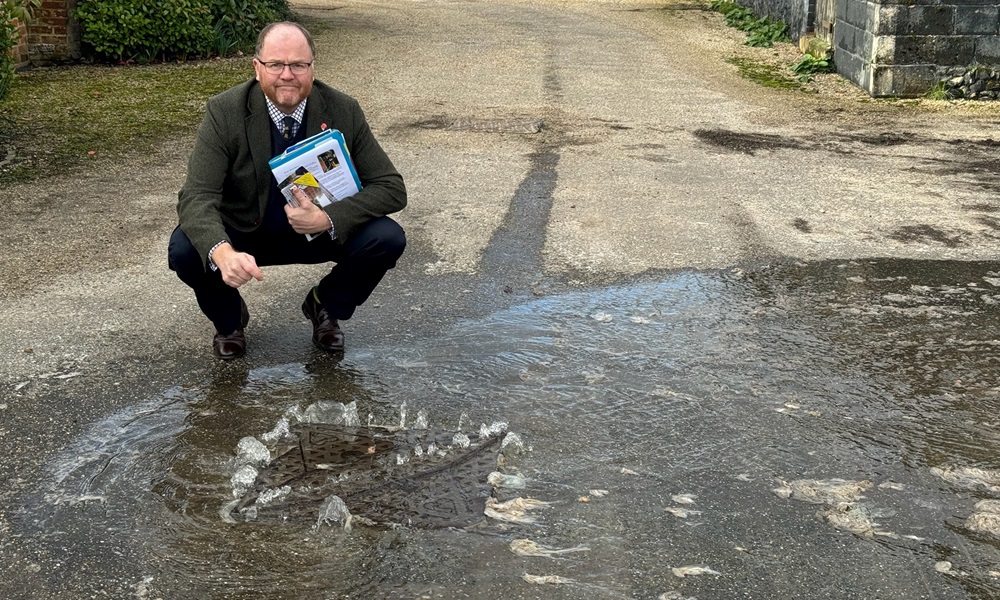
The rise in serious flooding in Norfolk over the last few years is caused by a number of factors: climate change; new housing estates with inadequate drain infrastructure; a serious lack of maintenance of our rivers, drains, ditches and culverts; and a lack of clearly understood legal responsibilities.
No one should live in fear of flooding every time it rains.
That’s why I am bringing a Flooding Bill to Parliament to change the laws on planning and flooding liabilities to ensure developers, water companies and other key stakeholders cannot shirk their responsibilities.
Yesterday, I attended a meeting in the Bill Office as work continues to draft that Flooding Bill – and I am working closely with Norfolk County Council and the Norfolk Strategic Flooding Alliance, as well as industry experts and the House of Commons Library, to get the detail right and bring the Bill forward as soon as possible.
Positive progress is being made we work to establish the first annual Norfolk Flood Prevention Summit too – at which the NSFA, with local MPs, will be able to hold the c.35 statutory flooding authorities more firmly to account and better co-ordinate the support that dozens of communities require across the county.
Full details of my campaign can be found here
If YOU are yet to contact me about a flooding issue that has impacted you, please do email me at george.freeman.mp@parliament.uk so that I can raise it with NCC and any other relevant stakeholders.
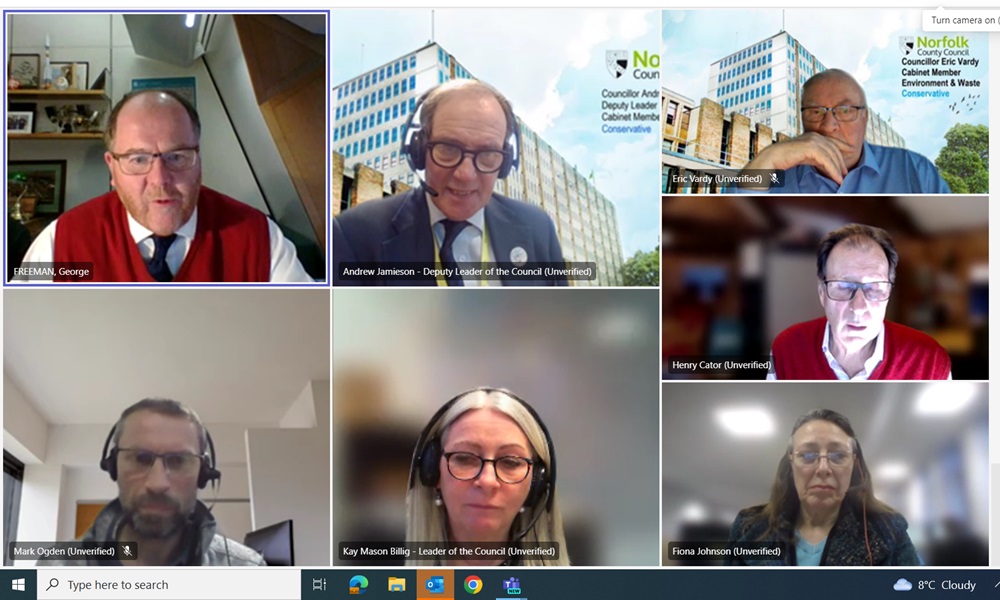
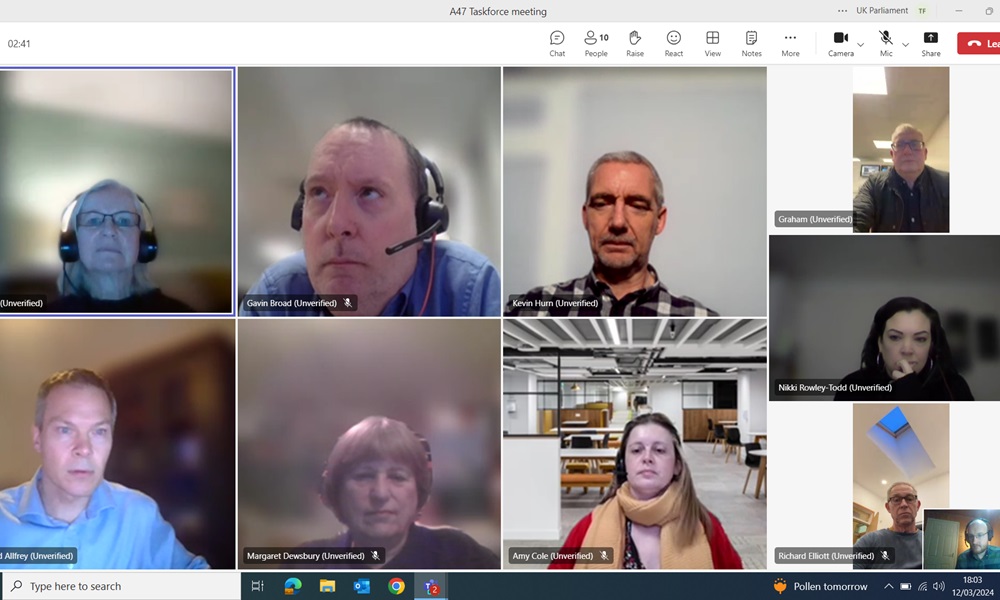
The North Tuddenham-Easton A47 dualling works and the upcoming Norwich Western Link extension are both key infrastructure improvements for Norfolk. However, I have always been clear that we must not allow them to worsen rat-running through our rural communities – which need proper mitigation packages in place to protect them and their rural nature and way of life.
That’s why, having helped establish the South of the A47 Taskforce back in 2019, I welcomed the chance to be involved in their latest meeting with NCC Highways and National Highways yesterday – to find out how progress is going on the work to develop those key mitigation packages.
Good news. Work to bring in reduced speed limits on a number of roads along the A47-Honingham-Barnham Broom-Kimberley/Carleton Forehoe-Wymondham-A11 Corridor is moving forward following extensive local consultation. They will hopefully be in place in the coming months.
Further meetings between NCC Highways, National Highways and each of the local parishes will also take place as work continues on the development of plans for the physical mitigation measures that need to be in place.
I remain committed to supporting the Taskforce and its constituent parishes in the months ahead – and look forward to sharing further news soon.
To read more on my historic work on rat-running, please visit my campaign page here
Throughout my time as the local MP, I have always strived to be one of our local education sector’s biggest advocates – regularly working with, and speaking up on behalf of, all our Mid Norfolk schools.
That’s why it was a pleasure to meet with Shannon O’Sullivan, the brilliant Headteacher at Thomas Bullock Primary in Shipdham, this past week to catch up with her and her wonderful team, speak to pupils and find out more about the fantastic work being done to educate them.
See my video above.
I strongly reject the views of some in Whitehall that we should be bussing young children to bigger schools in towns and cities. Thomas Bullock is another exceptional example of a village school doing outstanding work to support their youngsters – and I am determined to do all I can to ensure that rural schools like them across our area get the funding and support they need.
To find out more about my wider work on ‘Fairer Rural Schools Funding and Support’, please visit my campaign page here
To learn more about Thomas Bullock, please visit their website here

The serious ongoing problems with avoidable deaths from undiagnosed and untreated mental illness in Norfolk and Suffolk NHS Foundation Trust has to stop – with the right lessons learned.
Pleased to host today’s key meeting in Parliament with members of the Campaign to Save Mental Health Services in Norfolk and Suffolk group, Clive Lewis MP and Minister Maria Caulfield.
To see my recent question to the minister in the House, please click here
To find out more about my work ‘Speaking Up for Mental Health Services’, please visit my campaign page here

George Freeman speaks in the Budget debate and highlights the particular problems facing rural areas where the cost of living crisis caused by the pandemic and the Ukraine war has hit particularly hard. He especially welcomes measures to support innovation-led growth which drives up productivity, creates new industries and drives global inward investment.
George Freeman (Mid Norfolk) (Con)
It is a great pleasure to follow the hon. Member for Merthyr Tydfil and Rhymney (Gerald Jones), not least to inject a little context into this afternoon’s debate. The truth is that this country is reeling, but it is not reeling from 14 years of Tory cuts. It is reeling from the most extraordinary period of economic shocks that this country has ever seen.
I remind Opposition Members that the City crash in 2007-08 cost us £875 billion in quantitative easing under the then right hon. Member for Kirkcaldy and Cowdenbeath. Brexit cost us £70 billion in QE, the pandemic cost us £400 billion and the support that the Government put in place to help hard-pressed families with the energy crisis following the war in Ukraine cost £40 billion. This country has been through a perfect storm of unprecedented, once in 400-year or 500-year events with which we are all struggling.
I welcome this Budget. I will say something about the cost of living relief for rural areas such as Mid Norfolk, and something about growth and how we can get this country out of the huge risk of stagflation arising from the sequence of events that I have just described. In a global race for science and technology investment, we have to move faster and be bolder to unlock that investment.
The pandemic and the Ukraine war have been unprecedented shocks, particularly to the rural economy. Unbelievable cost of living inflation has hit rural areas particularly hard. How much harder? The Treasury calculates that the differential cost impact is about 150% harder in rural areas because of higher transport costs; higher heating costs; higher dependence on agriculture, food processing and high-energy industries; lower incomes; marginality and rurality; a very high proportion of retired pensioners on fixed incomes; and rural councils that have been structurally underfunded for decades by a Whitehall that does not understand rural areas. We put up with it for years during an era of cheap energy, but high energy costs have hit our public services, our charities, our businesses and our households hard.
I am very grateful for the support that the Chancellor has provided, but I will continue to make the case that rural areas deserve more support and more targeted support for a very particular set of rural problems. In this Budget, I welcome the fuel duty freeze, the household support fund, the cost of childcare relief, the child benefit measures, the alcohol duty freeze, the national insurance cut worth £800 for the average worker—including the self-employed—the SME recovery loan scheme, the SME VAT threshold move and the pension triple lock being fixed at 8.6%, which is four times the forecast rate of inflation. This is a Chancellor doing everything he possibly can to help the most vulnerable and the most deserving in our society.
In Norfolk, I particularly welcome the investment in new special free schools for children with special educational needs and disabilities—that cause is close to my heart—the accelerated east-west rail delivery that is crucial to unlocking our region’s potential, and the 10 sports facilities in rural Mid Norfolk. There was good news in a very tough Budget.
Most of all, I welcome the Chancellor’s measures to support growth in the innovation economy, including the £2.5 billion for the NHS, in addition to the £3.4 billion productivity plan, that will unlock an extra £30 billion according to the NHS. There is funding for the Faraday discovery fellowships; this country’s low Earth orbit leadership; the expert advisory group on R&D tax relief; the £100 million for the Alan Turing Institute; the £45 million for our life science research charities; the £5 million for the agrifood launchpad; and the £10 million for the Cambridge cluster. That is investment in the long-term growth of tomorrow, on which we all depend in order to get out of this extraordinary 15-year triple whammy of crises that this country has gone through.
Opposition Members do not seem to understand that we cannot tax our way to prosperity and we cannot spend our way to it. [Interruption.] I know they do not want to hear it, but it is the truth. For prosperity, we need to do two big things, the first of which is reform our public sector to tackle the productivity crisis properly. I am proud to say that this Government, in the 14 years I have been here, have increased health spending by a third, but we cannot see that outcome on the ground. That is because the healthcare system is structurally geared—it is not any one party’s fault—in a way that says, “If you deliver more for less, we give you less from the Treasury.” We punish innovation and we reward inefficiency, and that has to change. I welcome quite a lot that the shadow Health Secretary has said about reforming it.
The real key, however, is growth. As I have consistently argued for 14 years, we have to do more to support innovation-led growth, as that is the only form of growth that drives up productivity, creates new industries and drives global inward investment. With stubborn debt and the risk from all of the shocks that I have outlined still with us, that is more urgent than ever. We will never get out of this crisis by short-term house price booms, short-term consumer booms and booms in the City. We have to do it by attracting private sector investment into the high-growth sectors of life science, agritech, bioengineering, clean tech, fusion energy, semiconductors, robotics, tidal energy, satellite manufacturing and quantum computing. We are a powerhouse in science and research, but we are not yet a powerhouse in attracting the global billions into those sectors and turning them into solutions around the world. That innovation is the key, both to private sector recovery and, of course, to public sector reform, particularly in health, which is the biggest public service driving the structural deficit. We need to introduce a much faster wave of innovation in artificial intelligence and all sorts of digital health, with earlier prevention and better diagnosis. In that way, we can reduce the appalling problem of pouring money in and getting less out on the ground.
